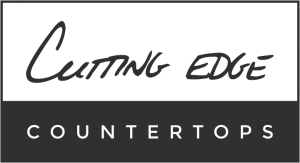Caring For Your Countertop
Water Damage
Water that is allowed to sit on the countertops for any length of time, especially near mitre joints, can penetrate and cause the core to swell and eventually delaminate. Be very careful in areas where sinks, dishwashers, coffee makers or kettles are located on or near a mitre joint. Wipe off water or other liquids immediately.
Normal Cleaning
In the majority of cases you can clean your laminate countertop with a clean, damp, non-abrasive cotton cloth and a mild liquid detergent or household cleaner.
Rinse with clean water but do not use excess water, especially near mitre joints.
Dry the surface with a clean, soft, non-abrasive cloth.
Special Cleaning
For matte or sculptured finishes, use a nylon-bristled hand or vegetable brush along with a mild liquid detergent and water solution, or household cleaner. Clean the countertop with a rotating motion. Rinse and dry the top with a clean, soft, cotton cloth. If streaks remain after cleaning use a mild glass cleaner and then wipe dry with a soft, non-abrasive, cotton cloth.
Glue Removal
Any contact adhesive residue on the countertop should be removed by using a reputable, non-flammable, contact adhesive solvent and a non-abrasive, cotton cloth. Use solvent sparingly. Read and follow all instructions and warnings before use.
Paint and Varnish Removal
Use a suitable solvent but use it sparingly. Excessive amounts can delaminate the surface. Follow all warnings and instructions. For water-based paints use an ammoniated household cleaner. For stubborn spots use a plastic, non-metallic, non-abrasive pad. Use it gently. NEVER USE steel wool or other abrasive scouring pads. These will scratch the surface of the laminate.
Stains
To remove or minimize stains use a mild, all-purpose, household cleaner and allow it to draw out the stain. Blot with a clean, damp, non-abrasive, cotton cloth and rinse with cold water. Read and follow all instructions carefully.
Some things can permanently stain the laminate. Newsprint, marking pens, hair dyes, wood stains and other staining agents should be kept away from the countertop. These stains may be reduced by using a paste of baking soda and water to pull out stain. Do not rub. Wipe up paste with a clean, damp, non-abrasive, cotton cloth, then rinse and dry.
Caution
Never use cleaners containing acid, alkali, or sodium hypochlorite on the laminate surface. These will mar, etch, corrode and permanently discolour the laminate. Do not place bottles or items containing these cleaners on the laminate surface.
Examples: drain cleaners, oven cleaners, ceramic cleaners, coffee pot cleaners, tub and tile cleaners, chlorine bleach, lime scale removers and more.
Scratch and Impact Protection
- Under normal use your countertop is very durable, but care should be taken to minimize certain conditions.
- Use cutting boards, chopping blocks or other protective elements when working on the countertop. DO NOT chop, slice, pound or hammer directly on the laminate surface. Knives or other sharp utensils can slice or scratch surface. Heavy blows from a hammer or meat tenderizer can crack or gouge the surface.
- Ceramics and abrasive objects can scratch the surface. Use placemats, doilies or trivets to protect surface.
- DO NOT use abrasive cleaners, powders, steel wool, sand paper or scouring pads on the laminate surface.
- HOT OBJECTS: Do not place hot objects directly on the countertop. Electric skillets, waffle irons, curling irons, hot rollers, etc. can damage the surface. Do not iron or place iron on laminate surface. Avoid cigarette contact.
- Prolonged exposure to temperatures of 140 degrees F (60 degrees C) or higher may cause the laminate to separate from the core material.
